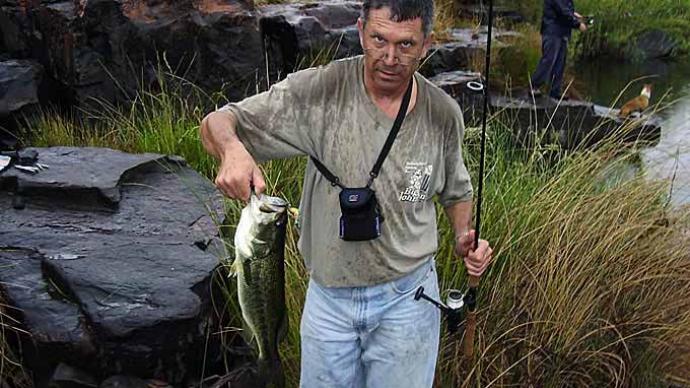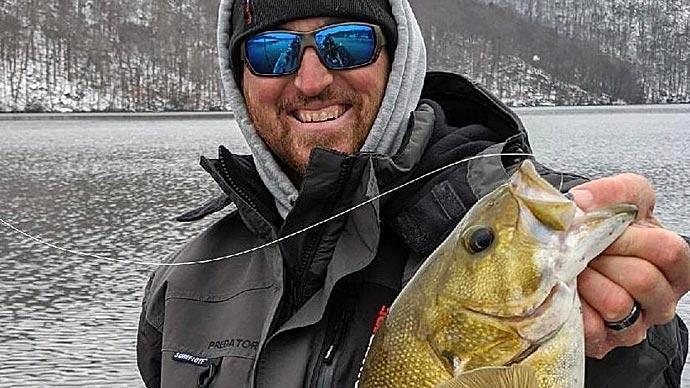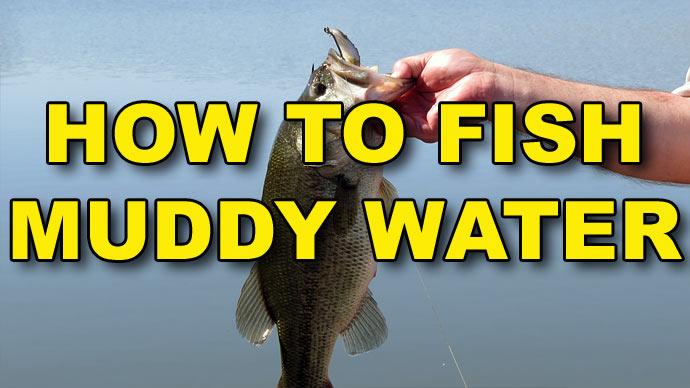
Several thoughts raced through my head when I was assigned this topic. The first was to discuss ways of building a warm fire and giving various recipes for hot chocolate. The second thought included spicing it up by adding gale force winds from the northwest.
A dose of reality then sank in as I realized that if I expanded the topic, the three conditions together would force me to dredge up a series of January tournaments on Toledo Bend from my distant past.
Cold water or muddy fishing conditions are usually tough. In their individual context they carry special problems. Together they are bad news. Due to my job responsibilities I have never had the luxury of fishing only in nice conditions, but rather go to the lake when I can get off or if fishing a tournament. This approach is used by most anglers. It means you have to adapt to the conditions even if they are lousy.
So let's look at the options to make the best of these conditions. The whole story evolves around winter conditions because warm water and muddy conditions are a whole other can of worms.
To begin with cold water slows the metabolism of bass, thus their required feeding activity is lower than in warmer water. The upside to this is that during late winter the females have to feed more than normal because of the demands for nutrients required by developing eggs. Also, bass are creatures of instinct and you may be able to force a bass to hit a bait just because you placed it in the strike zone and triggered a response.
The strike zone will be a key factor. At this time of year it will be very small. Thinking about where and how to present your lure is important now. Probably more than at any other time of the year bass will fix to structure in cold water. They'll also stay there for longer periods of time. This means throw parallel with depth changes, brush lines, or vertically fish this type of structure as well as logs, stumps, and larger trees.
If you have muddy water conditions added to the cold you now have fish that haven't been aggressive feeders. Their metabolism is lower and they have lost the ability to even distinguish food by sight.
This, as a general rule of thumb, means fish slow. The best two baits for filling the criteria are an oversized blade on a spinnerbait or a jig-n-pig. The spinnerbait doesn't have to be heavy, but the blade has to be large and give a constant rotation even at the slowest speeds. The instincts we have of throwing a spinnerbait and cranking it in have to change to crawling it in.
Play the lips of creeks or depressions with your casts since the fish under these conditions, will often layer along these contour lines.
If you find fish in the bottom channels use a modified tail spinner such as a Little George with an oversized blade and vertically present it to the school. The vibrations of the blade are of the greatest importance since bass in muddy water are more dependent on vibrations.
If the water isn't extremely muddy take advantage of what limited visibility there may be by using a bright blade such as chartreuse or florescent red. I noted I the spinnerbait doesn't have to be heavy, but qualify that by noting the heavier blade the more wind resistance it has. So you have to choose a balance of weight for ease in casting.
As you work through the game plan for fishing cold water that has been recently muddied don't forget to factor in the temperature of the rain that caused it. Winter rain often set off by a warm front or before a cold front when the air temperature may have been much warmer than the lake. Thus, the runoff may be more like micro infusion of early spring to the bass. Particularly this can be the case where areas of the lake are shelters from strong winds which more rapidly mix the edge of the colder and warmer water. A simple way to see if there is a temperature variable between the new and old is to search out such secluded areas and do some temperature comparisons.
Bass that detect a warm-up in winter by either a stretch of warm days or warm runoff will tend to be in shallower water. They're also more likely to be feeding. Still, these fish need to be worked slowly and with emphasis placed on following depth or structure changes. Some of the most productive fishing I've had on Toledo Bend in January has been in the backs of protected coves where the water from runoff was five degrees warmer than at the open mouth of the cove.
You can catch fish on crankbaits in cold muddy water, but slow retrieve is still the buzz-word. A bait that is oversized, bright in color, has an internal noise chamber, and gives off a slow wobble on retrieve will out produce a bait with only a couple of the characteristics noted.
If you are going to try to match the color of a crankbait for the season as well as get the best visibility for that forage, think crawdad. But don't use the ideal look alike in color. Remember the fish are in a reduced visibility state so make it a bright red or orange color. Even a black bait offers a sharp contrast in muddy water.
If you plan on using the crankbait in deeper water (10 plus feet), then make sure it has the loudest noise chamber for the size plug. The deeper you go in off-colored water, the less important color becomes and the more important vibration is as a stimulus.
I have saved the ultimate cold, muddy water bait for last. It is of course the jig and pig. The reason, in my opinion, it is the best bait is that you are working a bait that by design is a slow moving plug. Herein lies its greatest drawback. You have to be very sensitized to keeping a jig in the most likely water for producing strikes because you are going to get less casts with this plug even if you adapt a spot cast technique.
This technique isn't a bad idea in cold, muddy water because your chances really drop when your presentation gets the bait away from the creek edge, hydrilla edge, or natural or manmade wooden structures. To compensate make yourself think about where the lure is going to be presented and what you envision as the strike zone. Once out of that area retrieve the lure and cast to the next spot.
Given that most strikes on jigs will occur on the fall and you are working conditions which often restrict strike zones even more there is a lot to gain by adapting this style of presentation and not wasting time on retrieves.
In carrying the spot cast theory even farther if you feel a target has high likelihood of holding fish, don't hesitate to make several casts. A jig in cold water can act just like a topwater in warm water in that you can agitate the bass and trigger a strike even if it isn't necessarily doing so out of hunger.
Since you are going to work cold, muddy water realizing that bass have compromised vision, add appeal to the jig by increasing its odor or attractant features by spraying it heavily with a scent. This is one sense that does not change and helps the bass decide if it wants to eat what you've presented. Odor can be even more important with a slow moving bait where they have more time to smell the bait than with a lure designed for fast retrieve.
So, would I fish cold, muddy water by preference? The answer to that is that such conditions rank about 2,000 on my list of ideal conditions, but then what I prefer and what I am forced to fish are not always the same. After all my daughter proudly holds the photograph in reserve of me hitching up the boat in a snow storm. She said something about using it at the right time to convey the state of my mental stability. Hopefully the judge will be a fisherman.




